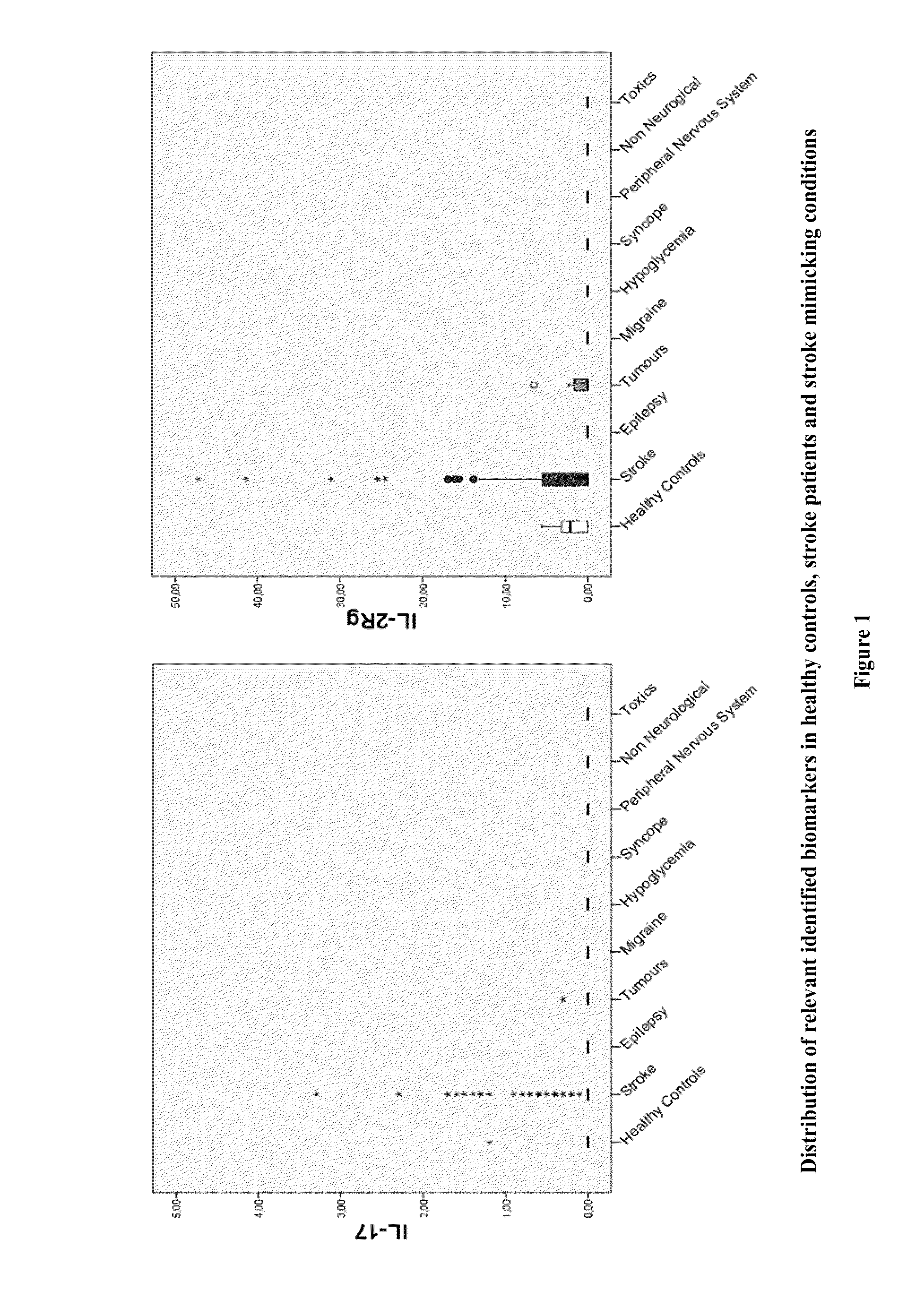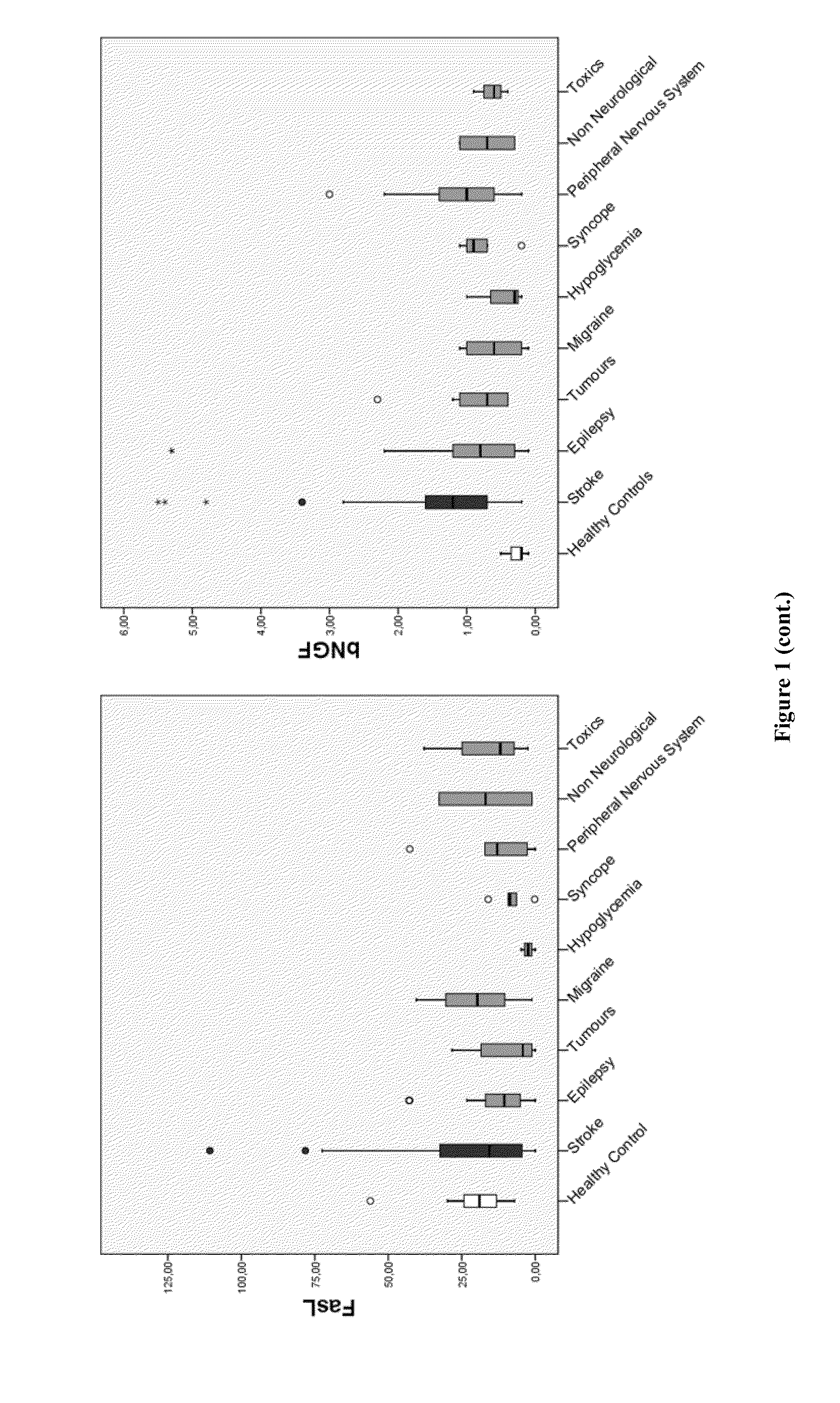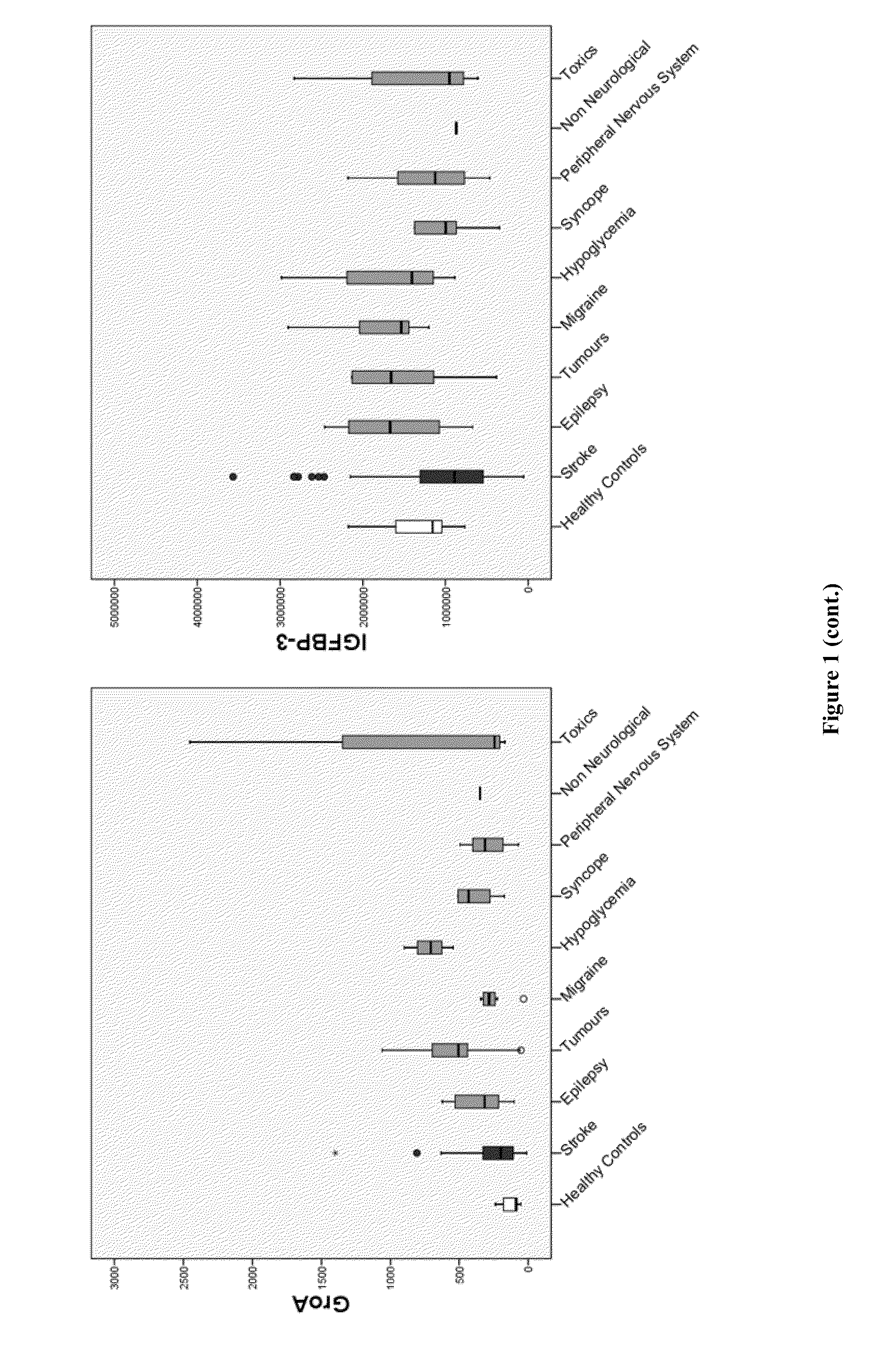Differential diagnostic biomarkers of stroke mimicking conditions and methods of use thereof
- Summary
- Abstract
- Description
- Claims
- Application Information
AI Technical Summary
Benefits of technology
Problems solved by technology
Method used
Image
Examples
example 1
Identification of Biomarkers Capable to Differentiate True Stroke from Stroke Mimicking Conditions
[0196]Patients with an acute stroke suspicion admitted at the emergency department of a Universitary Hospital have been prospectively studied. The identification of biomarkers capable to differentiate true stroke from stroke mimics is very important due to the high rate of stroke mimics which are not properly identified. This rate depends on the type of medical Service and Hospital where a patient with a suspicion of stroke arrives, ranging from 5% at the Stroke Units up to 50% in the Community Hospitals or ambulances. Therefore, this study was carried out in order to identify biomarkers capable to differentiate true stroke from stroke mimics.
1. Materials and Methods
1.1 Study Population
[0197]Study population was recruited in Vall d'Hebron Hospital (Barcelona—Spain). In front of a stroke suspicion (less than 24 hours from symptoms onset) the study protocol was initiated. In short, blood ...
example 2
Biomarkers to Monitor Stroke Outcome / Prognosis
[0228]In order to demonstrate that the biomarkers provided by the instant invention are not only diagnostic but also prognostic markers, inventors have analyzed the prognostic value of the biomarkers, demonstrating that some of them, e.g., IL-17, FasL and TNFR1 are significantly related to stroke outcome. Additionally, it is known that IL17 mRNA is related with the degree of neurological severity evaluated with the Scandinavian scale [Kostulas N et al. Increased IL-1beta, IL-8, and IL-17 mRNA expression in blood mononuclear cells observed in a prospective ischemic stroke study. Stroke. 1999 October; 30(10):2174-9]. Further, there exists a relationship between TNFR1 and stroke severity and infarct volume [Emsley Hedley C A et al., BMC Neurology 2007, vol. 7, 2007, page 5].
Methods
[0229]For this purpose, inventores evaluated modified Rankin Scale among N=117 stroke patients at third month after stroke onset using the modified Rankin Scale f...
example 3
Biomarkers to Monitor Treatment
[0248]Inventors have also analyzed the biomarkers provided by the invention to test their ability to monitor stroke or stroke mimicking conditions treatment. For that purpose, inventors analyzed the response of said biomarkers to a widely accepted stroke therapy (tPA) and to an experimental stroke therapy (simvastatin) given in the acute phase of ischemic stroke.
3.1 Determination of the Efficacy of a Stroke Therapy
[0249]This study was performed to demonstrate that the biomarkers provided by the invention “normalize” after stroke therapy, i.e., after stroke patients received the only FDA and EMEA approved therapy (namely intravenous tPA).
[0250]It has been previously demonstrated that reperfusion therapies reopen occluded arteries and recover stroke patients. Moreover, some biomarkers are being tested in this setting that might show tPA related complications and brain damage [Montaner J, et al. Matrix Metalloproteinase (MMP-9) pre-treatment level predict...
PUM
 Login to View More
Login to View More Abstract
Description
Claims
Application Information
 Login to View More
Login to View More - R&D
- Intellectual Property
- Life Sciences
- Materials
- Tech Scout
- Unparalleled Data Quality
- Higher Quality Content
- 60% Fewer Hallucinations
Browse by: Latest US Patents, China's latest patents, Technical Efficacy Thesaurus, Application Domain, Technology Topic, Popular Technical Reports.
© 2025 PatSnap. All rights reserved.Legal|Privacy policy|Modern Slavery Act Transparency Statement|Sitemap|About US| Contact US: help@patsnap.com



